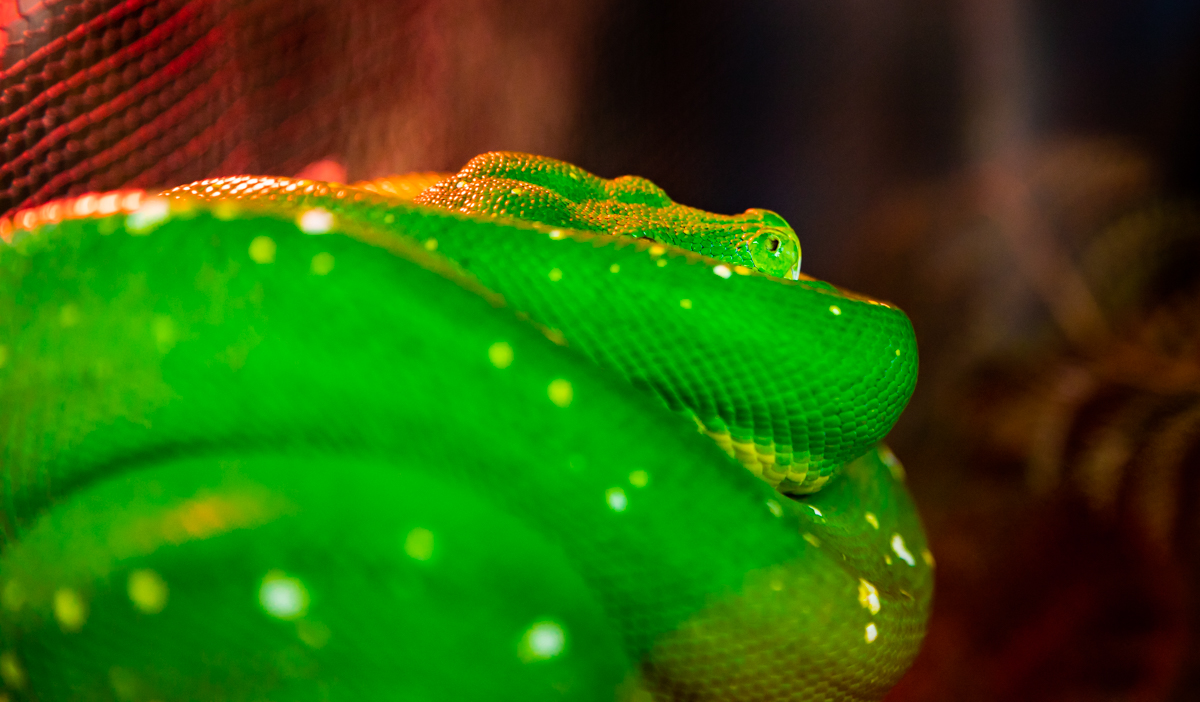
Kuranda is a small town that sits on the tablelands above Cairns. Tara arranged an all-day activity that started near the Tjapukai Aboriginal Center for us. We caught a tram and rode a cable just above the jungle canopy. In truth, we caught 3-4 trams as one wouldn’t have been long enough to take us to the top. At each transition between trams, there was a small boardwalk and a few informational signs, so we were able to learn a little bit about the rainforest during our journey. As our glass bubble skimmed above the treetops, we tried to get a few photos of the jungle. At one point, there was a very large waterfall with a rainbow appearing in the mist. It was a nice view, but I was more thankful for the open windows at the top of our pod. The breeze that came through our plastic bubble cooled us down just enough to make it pleasant.

At the end of the gondola, we were deposited in the town of Kuranda where we could explore three different markets, have a meal, get up close and personal with koalas and wallabies, hang out in a butterfly garden, enter a bird exhibit, or take a riverboat cruise (we had selected the river cruise, but the recent rains had caused them to cancel the river cruise). We opted to add exchange it for the bird exhibit, which made for an excellent addition to our koala and wallaby experience.
The part of Kuranda that had the koalas and wallabies is almost like a small zoo. We arrived just in time to have a photo taken with one of the koalas (Paul), so Tara held Paul while I stood close and had our photo taken by a staff member. Then they put Paul down for a nap. (These koalas only work 30 minutes a day, for a maximum of 3 days in a row, before getting a couple days off. On top of that, they get 20 hours of rest a day. Where can I sign up for that gig?)

From there we turned the corner and grabbed a handful of wallaby feed (some sort of pressed pellet). The pathway led us past a wombat napping in a hallowed out log to several wallabies lounging and resting in various parts of their enclosure. Some weren’t that interested in people or the food that we had to give them. A couple came up and slobbered all over me while I held my hand out to feed them (don’t worry, Tara got some photos). They were cute animals, but since they are mostly nocturnal, they were pretty out of it during the middle of the day (Tara still swears they were drunk).
Then we checked out the birds. We were warned before we went in that we should keep all shiny objects put away and secured. (Some of the birds are ornery and have collected an impressive amount of booty, which the staff use as a cautionary tale.) Then, just before we opened the door to enter, a white cockatoo named Henry verbally assaulted us and threw his food dish to the ground with a loud crash. He was a cheeky little jerk.

Inside, we wandered around and took photos of the birds (and even a turtle or three). I tried out my creepster lens on a couple of them and got some decent results. I am a little jealous of Tara’s relationship with Jimmy the cassowary. She talked nicely to him, and he actually posed for her. I didn’t get that kind of reaction from him. Maybe it was her feminine wiles at work.

When we finished playing with the birds, we wandered through the markets and checked out all the trinkets. Tara picked up some gifts, and we proceeded to the café (we are both very food motivated). The food was ok, and really shouldn’t be a part of this story, but the ginger beer was amazing. It was delightfully refreshing. It was sweet without being cloying. It had enough of the ginger bite to let you know what you were drinking, but not so much that it punched you in the back of the throat. Tara and I still reminisce about that ginger beer more than two weeks later.
The trip to Kuranda ended with a nearly 2 hour train ride back down to Cairns. The train had historic rail cars and the announcer gave us a short history lesson on why the rail line was important to the region and Australia, especially in the war effort for WWI and WWII. They made a couple stops along the way for people to get out and take photos of a waterfall or the valley. It was a nice ride, but I preferred the tram.
To see a gallery of Cairns photos, Click here.